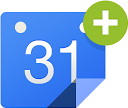16/11/2007, 15:00 — 16:00 — Sala P4.35, Pavilhão de Matemática
Francisco Marcos de Assis, U Federal de Campina Grande
Zero-Error Capacity of Quantum Channels
In this work, we generalize the Shannon's zero-error capacity (ZEC) of discrete memoryless channels to quantum channels. The communication protocol restricts codewords to tensor products of input quantum states, whereas entangled measurements can be performed between several channel outputs. Necessary and sufficient conditions for a quantum channel to have positive zero-error capacity is given. From an equivalent graph theoretical definition are given some properties of ensembles of quantum states and measurements attaining the quantum error-free capacity. A channel is said to be non-trivial if two or more channel uses are required in order to reach the capacity, and the ensemble of input states attaining the capacity contains non-orthogonal states. We show an example of quantum channel that gives rise to the pentagon as characteristic graph for a given ensemble of non-orthogonal quantum states and conjecture that its ZEC is that of the classical pentagon.

Apoiado por: Phys-Info (IT), SQIG (IT), CeFEMA e CAMGSD, com financiamento de FCT, FEDER and EU FP7, especificamente via o Doctoral Programme in the Physics and Mathematics of Information (DP-PMI), os projectos estratégicos FCT PEst-OE/EEI/LA0008/2013 e UID/EEA/50008/2013, o projecto IT QuSim, o projecto CRUP-CPU CQVibes, a Acção de Coordenação FP7 QUTE-EUROPE (600788) e os projectos FP7 Landauer (GA 318287) e PAPETS (323901).




![Matemática @ Instituto Superior Técnico [Logo] Matemática @ Instituto Superior Técnico](/img/DM_CMYK_clipped.svg)




